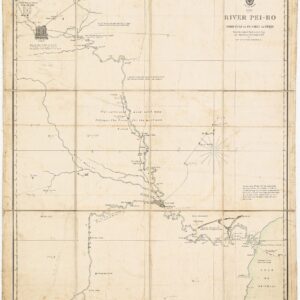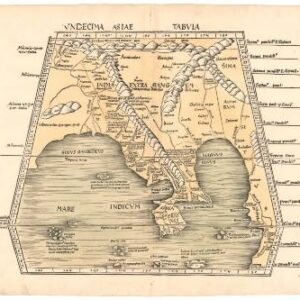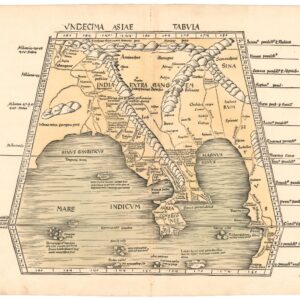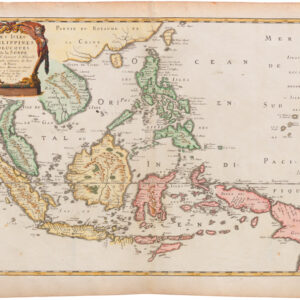Mapping Meiji Japan’s industrial production of silk for export.
Map of Japan with statistical report of raw silk production.
$475
In stock
Description
This rare promotional map presents exports of raw silk from Japan in the 1895/96 season. The map was commissioned by the Morimuri Aria company, dealers in Japanese raw silk, and was subsequently lithographed by one of Japan’s most famous printing houses: the Tokyo Tsukiji Type Foundry. While it is undated, its explicit reference to a specific annual season allows us to pinpoint its production year.
The purpose of the map is promotional, presumably to build connections with clients in America. No printer was better suited for this task than the Tokyo Tsukiji Type Foundry (see bio).
An important part of the map is the statistical information it provides in two large tables along the left side. These show the raw silk coming into Yokohama from producers around the country and the exports leaving Yokohama to Europe and America. While the first group is subdivided by region, the second is subdivided by export company. The information pertains solely to the 1895-1896 season.
Context is Everything
Japanese silk production, also known as sericulture, has a long and rich history dating back to ancient times, with archaeological evidence dating back to the early Bronze Age (ca. 300 BCE to 300 CE). Historically, silk from East Asia saw a decline in significance following the smuggling of silkworms from China to the Byzantine Empire in the 14th century. However, in 1845, an outbreak of disease among European silkworms severely impacted the European industry, sparking a renewed demand for silks from China and Japan. Throughout the nineteenth and early twentieth centuries, Japanese exports competed directly with Chinese silk in the global market, particularly in labor-intensive products like raw silk.
Between 1850 and 1930, raw silk emerged as a primary export for both Japan and China, constituting a significant portion of their total exports. Notably, Japanese silk exports experienced a remarkable quadrupling between the 1890s and the 1930s, propelling Japan to become the world’s largest silk exporter. This surge in exports was largely attributed to economic reforms during the Meiji period and the decline of the Qing dynasty in China, fostering rapid industrialization in Japan while Chinese industries stagnated.
With the onset of World War II, embargoes against Japan prompted the adoption of synthetic alternatives such as nylon. This shift, coupled with wartime challenges, contributed to the decline of the Japanese silk industry and its position as the world’s leading exporter of raw silk.
Cartographer(s):
Tokyo Tsukiji Type Foundry: Founded in the late 1860s by Motoki Shozo, often referred to as the “Gutenberg of Japan,” the Tsukiji Type Foundry had its beginnings in Nagasaki. In 1872, the company relocated to Tokyo’s Tsukiji district. After changing its name to Tokyo Tsukiji Type Foundry, the business thrived under the leadership of Tomiji Hirano. The firm boasted a wide array of services, including printing techniques such as lithography, collotype, and halftone, alongside typesetting. Its influence permeated the Japanese printing industry, leaving its mark on newspapers, magazines, maps, and books up until the 1930s. The firm also ventured into producing postage stamps, showcasing its adaptability and innovation.
The Tsukiji Type Foundry played a pioneering role in introducing movable English language type to the Japanese printing scene and, from that, became instrumental in advancing movable Japanese language type technology as well. Gradually, its dominance faced challenges as other typeset printing enterprises emerged. Competitors like the Ministry of Finance Printing Office and Shueisha, which later evolved into the present-day Dai Nippon Printing Co. (established 1876), and Toppan Printing Co. (established 1900), gradually eroded the influence of the Tokyo Tsukiji Type Foundry.
In addition to its printing ventures, the company collaborated with Takejiro Hasegawa, producing color woodblock prints for some of his books. Noteworthy printers engaged in this endeavor included Nomura Sojiro and Takagi Rintaro, further showcasing the Tsukiji Type Foundry’s diverse capabilities and contributions to Japanese print culture.
Condition Description
Folding case map. Very good. Some wear along fold lines.
References





